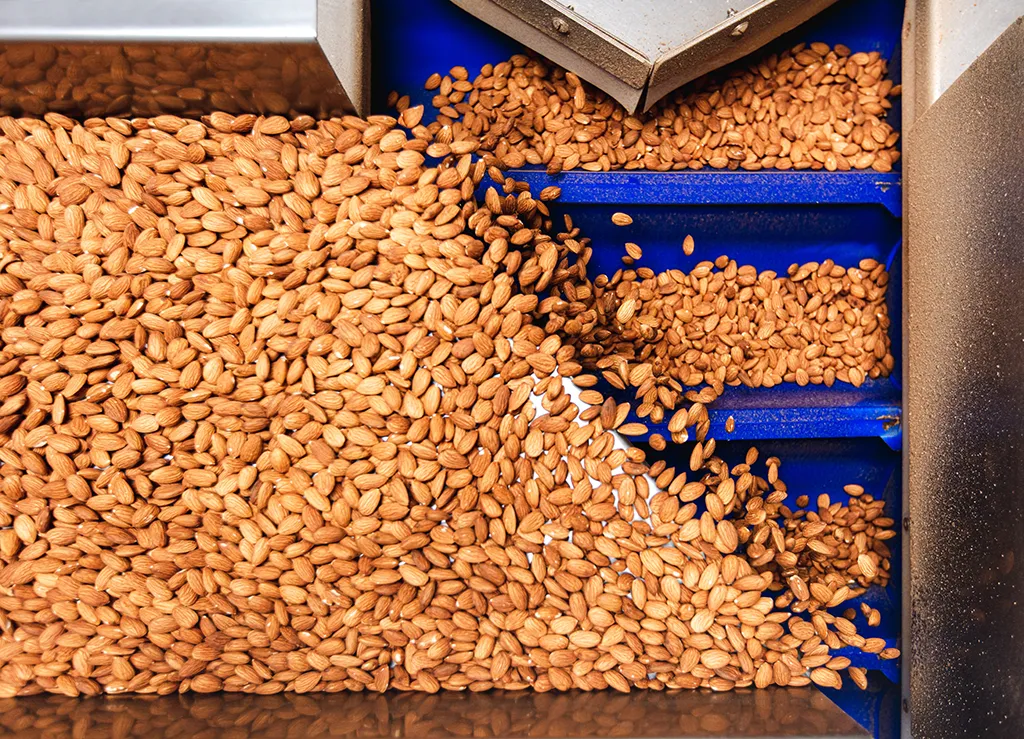Empty cart
Oh no! It appears your cart is empty. Add some almonds to your daily regime with the Treehouse products.
All Blog PostsNews

California handlers shipped a total of 211.76 million pounds in May 2025, reflecting a – -6.3% decrease compared May 2024. Season-to-date shipments now total 2.263 billion pounds, -1.9% behind last year’s pace. Although slightly below some industry expectations, these figures remain respectable by historical standards and position California for a projected carryout of 500–550 million pounds.
Year-to-date shipment trends remain consistent, with exports accounting for 160.73 million pounds, a modest year-over-year increase. Shipments to India rose by 9% in May 2025, although year-to-date totals remain down -3%, aligning with market sentiment that Diwali demand has yet to be fully covered. Western Europe recorded 48.9 million pounds in May shipments—an +11% monthly increase as tariff concerns spurred buying activity—bringing the year-to-date total in line with last year. The Middle East imported 31.3 million pounds during the month, pushing its year-to-date figure up +12% and reinforcing reports of healthy inventory levels in the region.
Domestic shipments remained sluggish at 51.03 million pounds, raising concerns as year-to-date figures are now down -7%, or -3.7% when excluding approximately 20 million pounds attributed to 2023 USDA purchases. This trend underscores growing concern about waning domestic consumption, particularly in the U.S. market, which is typically insulated from global tariff and currency fluctuations.
Following a strong April sales performance of 192.5 million pounds, May recorded just 89 million pounds in new sales—a significant 50% decrease from May 2024. April’s momentum, disrupted by rising geopolitical tensions between Pakistan and India, along with heavy April shipments paused buying activity and dampened local market pricing. In the Middle East, ample inventories and a disconnect between origin and destination pricing further slowed transactional activity. Meanwhile, in Europe, demand softened as buyers contended with uncertainty surrounding new tariff measures.
In the U.S., buyers adopted a cautious stance, shifting their attention to navigating the implications of tariff changes on other imported ingredients—delaying almond purchases in the process. Much of April’s demand was driven by tariff-related concerns, but growing ambiguity has since diminished buyer confidence. Additionally, the release of the 2.8 billion-pound Subjective Crop Estimate, though not overwhelming, eased fears of significant supply shortages, contributing to a more subdued market environment.
Consequently, the initial new crop sales figure of 65 million pounds, representing 2.3% of the estimated 2025 crop, comes as no surprise—particularly given that starting prices are more than $1 per pound higher than this time last year.
Despite a softer May, the projected carryout of 500–550 million pounds, or 18–21% of total supply, remains a strong and historically favorable position. While near-term demand appears somewhat uncertain, there is room for cautious optimism as
California transitions into the new crop year.
Ultimately, this report highlights the delicate balance of global supply and demand. Over the coming weeks, market activity is likely to pick up as sellers aim to improve new crop commitments ahead of the Objective Estimate. Meanwhile, buyers are expected to take advantage of recent market softening to cover short-term needs, though they may remain cautious about extending commitments too far into the future.
Be in the loop for vital news about the California almond market.
Enjoy 10% off when you order 6 or more